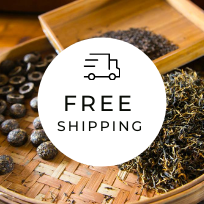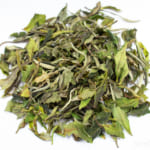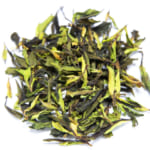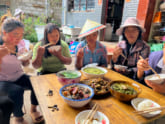- HOME >
- Featured Articles
Do you know that organic tea does not mean healthy?
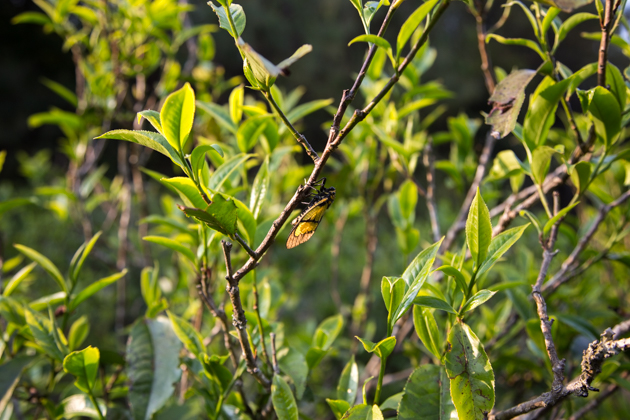
Have you ever heard about sustainable tea garden? It means tea garden is independent from human and being able to continue to propagate as part of ecology.
Every year we spend nearly two months in Yunnan for sourcing tea. We make sure that all of our Yunnan teas are from the sustainable tea garden.
The sustainable tea garden sounds similar to the organic tea garden. However, there is a huge difference between organic and sustainable tea garden.
Organic practice is not good enough
The main difference between sustainable tea garden and organic tea garden is that sustainable tea garden is not depending anything on human, unlike organic tea garden where normally organic fertilizer and/or organic pesticide is used. In the sustainable tea garden, tea trees continue to survive just like wild plants in nature. The tea trees in the sustainable tea garden absorb nitrogen and other minerals from surrounding ecology. Some organic tea gardens are the sustainable tea garden too if no fertilizer is used at all, although it is extremely rare.
In reality, majority of organic tea gardens are using organic fertilizer. To obtain organic certification, the owner of the garden needs to spend a lot of cost. So, in order to recover the investment cost, they often increase the production using fertilizer. Regardless of organic or chemical fertilizer, the usage of excess nitrogen-based fertilizer pushes tea tree to grow at fast speed. These tea leaves contain very less poly phenol since the tea constituents are consumed to support growing. This makes tea tree very weak, and becomes vulnerable to plant disease or attack of insects. These tea gardens do not fit in the definition of sustainable tea garden. Being a sustainable tea garden, regardless of organic or not, tea garden must be free from fertilizer.
What is sustainable tea garden
In the sustainable tea garden, the tea tree does not require any fertilizer from human and it only get the nitrogen in the environment. In a way, the sustainable tea garden is independent from human. It is just like wild plant that keeps growing despite no fertilizer.
For the growth of plant, nitrogen, carbon and minerals are essential. Minerals are quite abundant in soil and the carbon is easily supplied from decomposed plant. The nitrogen is the hardest nutrition for the natural plant to acquire. Sometimes nitrogen comes from dead insects, animals or faeces. But I suppose it is very rare case. Usually, the natural nitrogen is recycled from other dead plant or it comes from the specific type of bacteria that grows symbiotically with the root of certain plants. The nitrogen is firstly taken from air through bacteria and recycled underground. So, if we want to keep the tea garden sustainable, it’s very crucial to keep the weeds in tea garden.
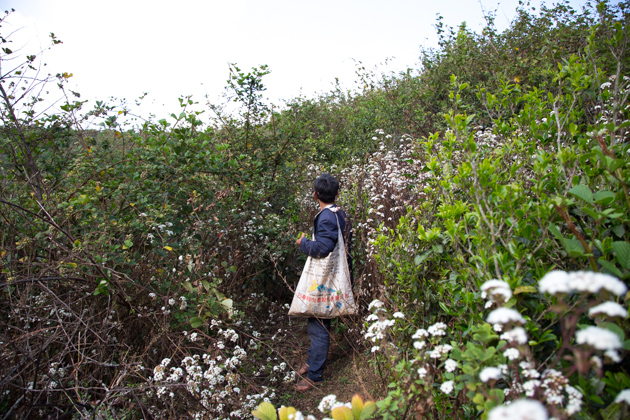
Fertilizer increase chlorophyll but to decrease poly phenol
Without nitrogen fertilizer, tea tree grows very slowly and it does not need so much photosynthesis too. Hence, the size of the tea leaf becomes smaller because tea leaf requires less sunshine and less chlorophyll. This is the reason why the tea leaf from the sustainable tea garden is always yellowish. The tea leaf of sustainable tea garden consists of very small cells and high density.
Without fertilizer, tea also produces a lot more polyphenols than ordinary tea. Usually, polyphenols in the sustainable tea tree is at least three times more than the tea grown with fertilizer. Interestingly, tea trees in the sustainable tea garden is resistible from insects. Normally, when the common tea garden is switched to the sustainable agriculture practice, it often gets very serious insect attack on the first few years. After 7 to 8 years passes, tea tree becomes robust and farmers do not need to worry about insects.
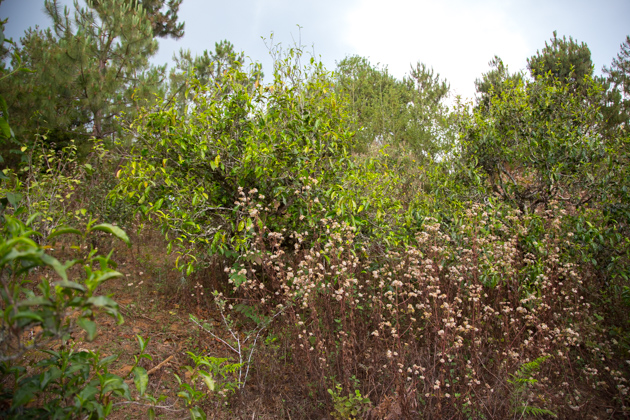
A chain of health
Have you ever thought of a chain of good health? The healthy tea is very rich in functional substances. These substances are also working as functional substance for tea itself. Drinking those healthy tea, we will get a lot of health benefit too. On the other hand, the fertilized tea contains very less polyphenols but very rich in amino acid that is composed from the nitrogen in fertilizer. It is like we are indirectly taking the fertilizer through drinking those teas.
For vegetable and tea, people tend to blindly appreciate it as long as the items are labelled as “organic food”. Organic food could be free from pesticides. But it does not mean it is healthy or rich in functional substances. We should be aware that a number of organic teas and food are made with a lot of fertilizers. If we wish to improve our health through drinking tea, we should look for the healthy tea.
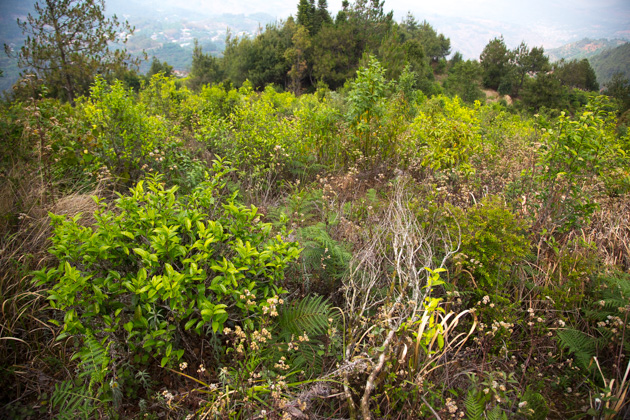
Finding quality tea is the same goal as finding healthy tea
The reason why I began to be interested in the sustainable tea garden is not because of health or environmental concern. I look for the sustainable tea because of the quality. It is interesting that my goal for the ultimate quality was the same goal as the tea that is grown under the healthy environment.
If we look at the premium tea in China, most of them comes from the garden using no fertilizer too. Tea trees in those gardens take much longer time to grow. As a result, it produces more poly phenol and minerals which gives strong after taste.

Yunnan is the kingdom of sustainable tea garden
Nowadays tea trees are grown in many countries. However, based on my experience, Yunnan China is second to none in the abundance of sustainable tea garden. Yunnan province has large land area that is even bigger than the country area of Japan. Out of Yunnan, 90% consists of mountains. Usually the more remote village it is, the more sustainable tea garden we can find. In those remote or less famous area, tea trees are left in nature. The owner of garden only carries out weeding once a year before plucking tea. I devoted nearly two months every year for Yunnan tea. It is because I was fascinated by the large number of sustainable gardens in Yunnan.
Preserving sustainable tea garden
Although I mentioned there are many sustainable tea gardens in Yunnan, it does not mean sustainable tea gardens are everywhere in Yunnan. Based on my experience, more than 95% of tea gardens are fertilized. The sustainable gardens are only left in the remote mountain that is far away from the village centre. As a common trend in China, once the tea production area gets famous. the price of tea is sky-rocketed. Subsequently, the tea garden owner applies a lot of fertilizer hoping that they can increase both the production and income.

Tea garden used animal faeces: Tea leaf turns dark green, bigger and the trunk of tree becomes brown.
The reality of sustanable gardens in China
Interestingly, nowadays a lot of people in China has started to be interested in Sheng-tai cha. It means sustainable tea or ecological tea in China. I think it is very good trend as compare to the earlier time when people only talked about the age of tree and the famous name of the production area. However, I also realized that a lot of so-called Sheng-tai tea garden in China is not really sustainable. It is because a lot of them believe organic fertilizer or animal faeces are acceptable. If animal faeces are given to tea garden, tea will grow at very fast speed. The quality of tea drops even if the age of tea tree is old. The fertilized tea tree becomes weaker; sometimes even hundreds year old tea tree just dies all of a sudden. Literally, fertilizer makes garden non-sustainable.
The effect to preserve the sustainable tea garden
We think that it is important to continuously educating the tea garden owner in Yunnan. We need to enlighten them why fertilizer is harmful for tea tree. Many of them were surprised when they taste tea side by side between fertilized tea and non-fertilized tea. They often drink tea. But they has never compared teas grown in different method. Once the local people understand the difference, they understand the value of sustainable tea garden. We usually pay higher unit price for those sustainable tea. It is justified as the quality is higher and tealeaf is richer in functional substances and the production quantity is lower. We have to motivate them to maintain the sustainable tea garden, and not to use fertilizer to sell more quantity but lower quality tea. At the same time, we have to clearly let them understand that we are willing to pay more not because of the production area is famous but quality of tea is different.
Related Articles
How to get the latest update on HOJO Tea?
1. Follow Twitter, 2. Click "Like" on Facebook, and 3. Subscribe in newsletter. You can have the latest tea news from HOJO Tea.
 Subscribe the Newsletter to enjoy the privileges
Subscribe the Newsletter to enjoy the privileges- You may receive a free sample upon purchase, or you may have the priority to purchase special products. So please remember to subscribe our newsletter as well as the social network.
- Yunnan Chun Jian Green Tea from High Mountain Gardens
- Yunnan Chun Jian Green Tea is now available.This tea is made from naturally grown leaves harvested from high mountain gardens at 2100m above sea level. It has a rich, long-lasting lingering aftertaste, comparable to raw Pu-erh tea. Yunnan as a Distinctive Tea Growing Region Over the past 20 years, we have explored a wide range …
- Limited Loose Leaf Release of 2025 Da Xue Shan Wild Raw Pu-erh Tea
- We have released the 2025 loose-leaf version of Da Xue Shan Wild Raw Pu-erh Tea.This tea comes from wild tea trees that grow naturally in the high mountains of Yunnan Province, at elevations above 2000 meters. This year, we were only able to secure a small quantity for retail, and the current release is available …
NEW ARTICLES
 Yunnan Chun Jian Green Tea from High Mountain Gardens
Yunnan Chun Jian Green Tea from High Mountain Gardens- Yunnan Chun Jian Green Tea is now available.This tea is made from naturally grown leaves harvested from high mountain gardens at 2100m above sea level. It has a rich, long-lasting lingering aftertaste, comparable to raw Pu-erh tea. Yunnan as a Distinctive Tea Growing Region Over the past 20 years, we have explored a wide range …
 Limited Loose Leaf Release of 2025 Da Xue Shan Wild Raw Pu-erh Tea
Limited Loose Leaf Release of 2025 Da Xue Shan Wild Raw Pu-erh Tea- We have released the 2025 loose-leaf version of Da Xue Shan Wild Raw Pu-erh Tea.This tea comes from wild tea trees that grow naturally in the high mountains of Yunnan Province, at elevations above 2000 meters. This year, we were only able to secure a small quantity for retail, and the current release is available …
 2025 Da Xue Shan Wild White Tea Now Available from Yunnan
2025 Da Xue Shan Wild White Tea Now Available from Yunnan- The 2025 harvest of Da Xue Shan Wild White Tea is now available. Crafted from truly wild Camellia taliensis trees growing naturally in the high-altitude forests of Yunnan, this tea offers a purity and character unique to its origin. This year’s unusually dry climate during the withering season was ideal, resulting in a floral and …
 Why Do Some Teas Taste Astringent? Exploring the Causes and Mechanisms of Astringency
Why Do Some Teas Taste Astringent? Exploring the Causes and Mechanisms of Astringency- Tea can range from having no noticeable astringency to possessing a very strong one. What causes this astringency? This article explores the causes and mechanisms behind astringency in tea. Causes of Astringency Astringency arises from the binding of tea components to proteins in the oral cavity, creating a sensation of tightness or dryness. The tongue …
 The Impact of Heat Sources on Tea Flavor
The Impact of Heat Sources on Tea Flavor- It is widely recognized that the material of a kettle plays an important role in shaping the taste of water for brewing tea. Yet, an often overlooked but equally significant factor is the type of heat source used to boil the water. Different heat sources, whether gas, electric, charcoal, or wood fire, can impart distinct …
 New Release of High Mountain White Tea
New Release of High Mountain White Tea- We are pleased to introduce our High Mountain White Tea, sourced from a unique tea garden with two key features: 1. Located at an altitude of 2200-2300m2. Completely wild and untended The ideal natural conditions of this garden result in tea of exceptional quality, offering a pure and gentle, nourishing taste. High Altitude and Wild …
 New Release of Da Xue Shan Wild White Tea 2024
New Release of Da Xue Shan Wild White Tea 2024- We have released the 2024 Da Xue Shan Wild White Tea Loose Leaf. This tea was produced under our direct supervision during our stay in Yunnan Province, ensuring meticulous production management on site. Definition of Wild Tea in Yunnan Province People in Yunnan strongly associate Camellia taliensis with wild tea, regardless of where it is …
 New Release of Wild Pu-erh Jasmine Pearl
New Release of Wild Pu-erh Jasmine Pearl- Out of curiosity, we decided to create a jasmine tea based on Da Xue Shan Wild Raw Tea. This resulted in an exceptionally rare tea, not only in Japan but also in China. Custom Production Network for Jasmine Tea At our store, we source various types of base teas from different regions during the spring. …
 2024 Overview: Our Yunnan White Tea Quality, Process, and Weather Insights
2024 Overview: Our Yunnan White Tea Quality, Process, and Weather Insights- One of the teas we’ve been focusing on in Yunnan Province is white tea. Historically white tea has been produced in both Fujian Province and Yunnan Province for a long time. While white tea from Fujian Province is well-managed during processing, we are dissatisfied with the quality of the raw materials due to the use …
 Yunnan’s Hospitality Culture: Expressed Through Meals
Yunnan’s Hospitality Culture: Expressed Through Meals- In China, as a form of greeting, it’s common to say “你吃饭了吗?” which means “Have you eaten?” However, in Yunnan Province, the phrase “吃饭” is often used in various situations, more like “Eat, eat,” serving as an invitation to share a meal. Yet, with prolonged exposure to Yunnan, one comes to understand that these meal …
Shop Info

Address:Lot No. T-215, 3rd Floor, The Gardens Mall, Mid Valley City, Lingkaran Syed Putra, 59200 Kuala Lumpur
Tel: +603-2287-4537
Business Hour: 10am to 10pm
Category
- New Arrival at HOJO Online Shop
- Featured Articles
- Newsletter
- Types of Tea
- Origin of Tea
- Teapot and Tea Equipment
- Tea Column
- How to enjoy tea
- Tea Processing
- How to choose quality tea
- Tea constituents and functional effect
- Safety of Tea
- Foods
- Tea Business Operation
- Hobby and Outdoor Activity
- Ranking of Tea
- Video
- FAQ
- Media Release
Profile

- AKIRA HOJO
- I invite you to experience my tea selections.I was born in Nagano, Japan. In university, I studied agricultural chemistry, and I have the master degree in food science. I worked in Japanese food industry for 10 years. I involved in R&D, QC and QA. As a factory manager, I implemented ISO9000 series and managed the factory.
- The Art of Tea Magazine
- We posted the article on “The Art of Tea Magazine No.9, the magazine is published in Taiwan. We featured some scientific view about the tetsubin
- New Straits Times
- The Malaysian National Newspaper, New Straits Times featured HOJO Tea on 17-Oct-2007.


